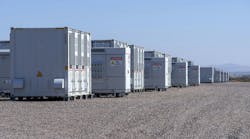The electric utility industry is rapidly modernizing the electric grid through deployment of advanced systems. As utilities are deploying smart meters, however, they are facing a key issue: Should they integrate ancillary secondary programs to the metering part of a smart grid deployment or operate them on separate platforms?
The key approach is on new smart grid technologies, information technology (IT)/data systems and two-way communications platforms. Utilities are assessing the business case, cost/benefits, software and technologies for advanced metering, distribution control systems and demand response (DR). For the most part, emerging smart grid programs deploy advanced networks, new electronic metering and IT technologies. Some are deployed in phases to validate the technology while others have full roll-out programs.
The industry is learning about the full capabilities, limitations and challenges of smart grid systems. To compound these challenges, a steady flow of new and emerging approaches and technologies is entering the market.
Demand Side Management
In earlier years, DR was considered load management (LM), and vice versa, which disconnected loads for short periods of time to “clip the peak,” so to speak. The solutions were deployed as stand-alone tactical tools with limited internal interaction within a utility.
More than 1,200 active legacy DR/LM programs are operating among more than 3,000 utilities. So far, 18 million utility customers have volunteered to participate in these programs, which have been deployed recently to about 20 years ago.
For the most part, these DR programs have proven they are very reliable and serve as strategic tools to lower the cost of power by reducing peak demand and improving distribution system reliability. But expectations for DR/LM programs are changing. Older programs have become elements of a larger architecture called demand side management (DSM). DSM programs are now center stage, and in many cases, have become part of a utility's power resource plan.
Challenges Faced by DSM Programs
Utilities are now faced with several key challenges:
-
How to manage the cost of power through load reduction versus generation.
-
Defining applications and expectations for DSM and where they fit within the AMI-smart grid architecture. This includes data prioritizing and message broadcasting.
-
Few industrywide standards exist for the DSM industry.
-
As hardware and software technologies, cyber security, data management-data ownership, applications and analytics are evolving, should utilities add in elements like DSM-DR/LM into one pipeline and central control system?
-
Legacy LM technology and IT issues are well known, and customers endorse and embrace these programs.
-
If customers opt-out of accepting a smart meter, how does one establish communications for a DR controller if it is part of the AMI program?
-
To achieve a true DR/LM system upgrade to operate with a smart grid program, each device will need to be visited and may call for service personnel to “touch” the device, sometimes requiring city/county permits.
-
Utilities look at smart grid AMI programs as pipelines for metering data. Many are postponing the integration of legacy DR/LM programs until they've been solidified and validated.
Managing the Process
Electric utilities must first understand the premise for the implementation of a smart grid program and then find out if it requires other applications beyond metering to justify the business case. The challenge for a legacy DR program is validating if the unit is available to be operated. For example, did it actually disconnect load and can loads reduced be validated?
Using load survey capabilities of AMI metering programs can serve to validate the load reduced. A common practice is to collect end-use kilowattt load measurements before a peak, then capture new readings during a peak period to obtain accurate assessment of whether the legacy DR control module provided the value intended.
A second approach in validating legacy DR programs is to have a statistical sample of customers' heating and air conditioning units instrumented and compare it with whole-house metering data.
Historical reliability of legacy DR programs has been strong enough that little maintenance has been performed. Periodic sampling and evaluation of control devices, along with use of AMI metering data, may help validate the effectiveness of these programs.
There is no question a full two-way link into each DR controller is optimum. Electric utilities, however, must consider at what price and risk, as AMI programs mature.
Dick Preston is a member of the Utilimetrics board and serves serves as the director of demand response with MW Consulting.

